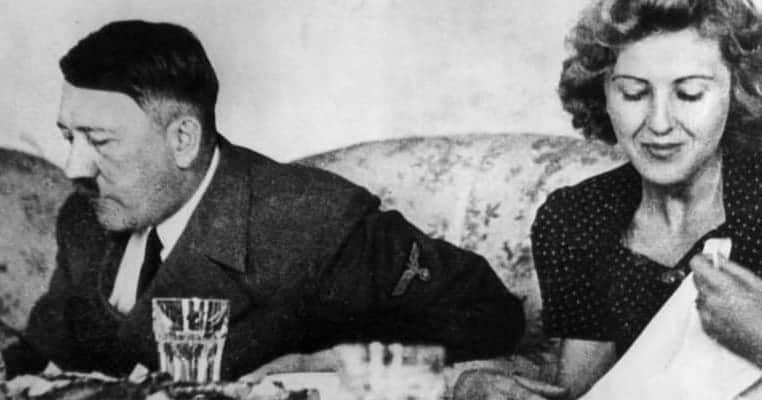The Third Reich was supposed to last a thousand years. In the end, it lasted less than 15. By the beginning of April 1945, the Red Army was advancing on Berlin from one side, with the Americans advancing on the other flank. Hitler retreated to an underground Bunker deep beneath the Reich Chancellery building. Here, surrounded by his most loyal and fanatical followers, he attempted to stall, even reserve, Germany’s inevitable defeat.
Few people made it out of that bunker alive. Hitler himself famously chose to commit suicide rather than be captured. A number of his devoted SS servants followed his example. But some did make it out. And thanks to their testimonies, we have a good idea of what life was like below ground in those dark days. It was, as you might expect, grim and terrifying. But the horror also brought people closer together. Combined with a sense of impending doom – and the contents of the Chancellery’s wine cellars – this produced a strange atmosphere of terror and decadence. While Hitler ranted, others partied like it was the end of the world.
So, here, in 16 steps, we take you through what life was like at the last stand of the evil Nazi regime:

16. Hitler didn’t just hide in his Bunker, he also thought he could dictate the outcome of the war from his underground headquarters
The Bunker wasn’t just a shelter for Hitler and his top aides to shelter in. Instead, it was a fully-functioning control room. From there, Hitler intended to control the course of the whole war and not just the Battle of Berlin waging above his head. Joining him down below ground were several of his key men, including his personal secretary Martin Bormann and Joseph Goebbels, the Nazi minister of propaganda, and his family. And then Hitler also ordered his secretaries, including Traudl Junge, his own nurse, Erna Flegel, and a private switchboard operator, Sergeant Rochus Misch, underground with him.
One of the 30 rooms in the Bunker was a dedicated map room or situation room. It was here that Hitler attempted to control the war. He would meet his generals at least once a day and, in cramped conditions, pore over maps of Berlin, attempting to find a way to block the Russian advance. However, as we shall see, he would draw up impossible plans, directing units that no longer existed and issuing orders to generals who no longer believed the war could be won.

